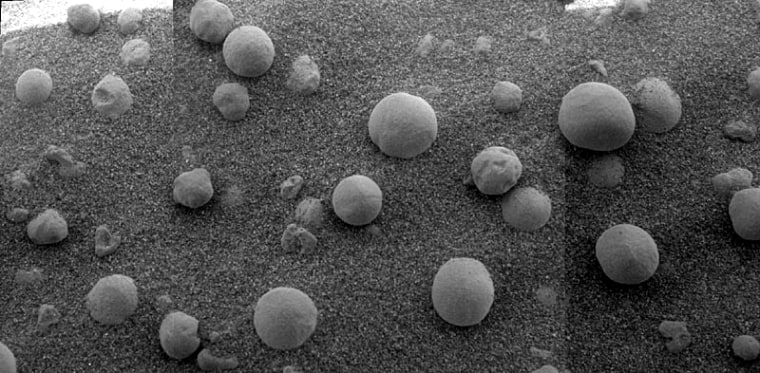The Mars rover Spirit got moving again Thursday after an interruption caused by cold, and controllers figured out how to drive its twin, Opportunity, so that it won’t slip on the sloping martian terrain.
“I’m very pleased to report that we have two very busy rovers on the surface of Mars,” said Art Thompson, a robotics engineer at NASA’s Jet Propulsion Laboratory.
NASA had been unable to send commands to Spirit through its high-gain antenna Tuesday after the rover’s mast unexpectedly cast a frigid shadow over the motors that are used to position the lollipop-shaped antenna and keep it oriented toward Earth. The cold disabled the motors.
As a result, Spirit remained parked for a day instead of continuing its journey toward a crater.
Eventually, the sun warmed the motors, and they resumed working, enabling NASA to order Spirit to resume its trek Thursday. It covered about 79 feet.
“So we’re basically back on track,” Thompson said.
Spirit has shown no lingering effects from a computer memory problem that earlier left it stalled close to its lander platform, Thompson said, pronouncing the rover “in outstanding health.”
In a crater on the other side of Mars, Opportunity was scooting along an outcropping, photographing it and stopping at certain spots that scientists want to study in more detail.
The rover had run into trouble driving up the rim of the crater, but engineers studied the problem on Earth using dry sand and learned that they needed to set the controls to overshoot their target while going uphill, while undercompensating when going down.
Over the last three days, the rover has ended up off its targeted distance by less than a foot, Thompson said.
NASA sent the two rovers on an $820 million mission to look for geologic evidence that Mars was once a wetter place that might have been hospitable to life.
